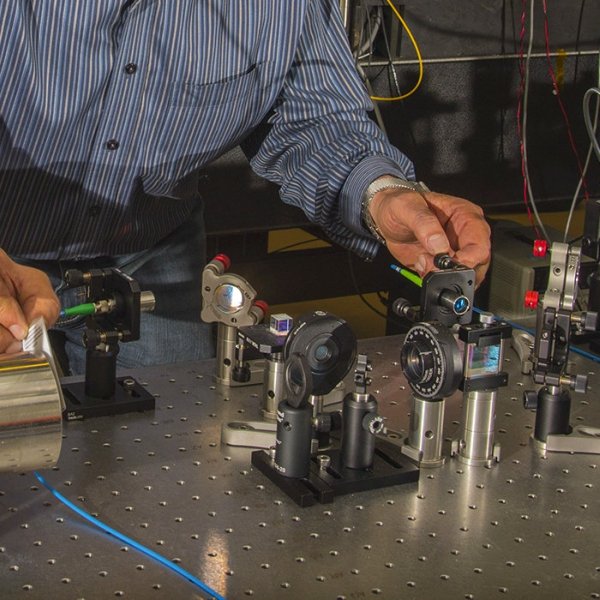Quantum radio will enable communication and navigation underground and underwater.
Existing devices that use electromagnetic waves to communicate, for example, GPS, smartphones or radios, don’t work everywhere. For example, in buildings, cities, underground or underwater they tend to be unreliable.

A quantum radio - Source: Burrus/NIST
The researchers for the National Institute of Standards and Technology (NIST) have decided to change that. And they decided to use quantum physics to solve the problem. Their research promises a technology that could help marines, soldiers, geological surveyors and other people. The signals from GPS don’t penetrate deeper layers of water, ground or for example walls. That means GPS is useless in many places of the world. This is a big problem when mapping out mines or underground areas. Similarly, this is often a problem in cities or inside of buildings. The NIST team lead by Dave Howe is experimenting with a low-frequency magnetic radio. It uses digitally modulated magnetic signals at a very low frequency. Such signals are capable of penetrating the earth, water or building materials much deeper that currently used electromagnetic signals.
David Howe and the quantum radio - Source: Burrus/NIST
Electromagnetic fields at very low frequencies are already being used to communicate with submarines. But they don’t have enough capacity to transfer audio or video. On top of that, the submarines have to slow down and come to periscope depth (about 18 meters). The low sensitivity of the receiver and the extremely low width of the frequency range are both a big problem. And that’s where quantum physics might help. The best sensitivity for magnetic fields is achievable with quantum sensors. And quantum sensor also gives the chance to use a larger part of the spectrum to communicate. Howe and his colleagues managed to detect digitally modulated magnetic signal that included digital information in forms of either 0s or 1s with a sensor of magnetic fields based on the quantum properties of rubidium atoms. This newly developed magnetometer uses polarized light to detect the spin of rubidium atoms. The sensor was capable of detecting magnetic signals as strong as 1 pikotesla (which equals to one-millionth of the magnetic field strength of the planet Earth).
Howe says that sensors based on the quantum properties of atoms give fast answers and high sensitivity at the same time. Similar atomic magnetometers are used to measure naturally occurring magnetic fields. The NIST team managed to use for communication purposes. The research of a quantum radio is only starting. Many things need to be optimized and it doesn’t work at large distances yet. But the technology looks promising.
Sources:
posting is very useful and can add insight ..
What is the bandwidth? How much bits per second?